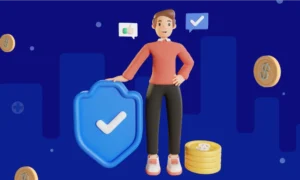The best way to obtain data across multiple online resources is to use web scraping. However, you might face a challenge once you start researching how to do it. There are simply many ways to scrape data off websites. However, the most commonly used web scraping strategy is based on scripts and bots written in Python.
Many companies stir away from scraping data using Python as they deem it too complicated. The truth is quite the opposite, as this programming language comes with ready-to-use libraries for scraping, such as the Python Requests library. Below you can find everything you should know about how to scrape using Python.
What is Python web scraping?
Many people believe that web scraping refers to collecting data from the web. While it is true, it’s only partially true. Web scraping also encompasses parsing the raw data collected online. What does Python web scraping mean, then? It simply means that you use code written in Python to scrape data from online sources.
Python is an interpreted programming language that has powerful capabilities when it comes to both collecting and parsing data. You can use it to streamline your web scraping operation, but let’s not vouch for Python without providing proof. Here is why you should use Python for scraping.
Importance of using Python for scraping
Developers have many options when choosing the programming language to build a web scraper with. Yet, they choose Python. There are several reasons for it.
Let’s start with the most important reason – Python can both scrape the target data from websites and parse it into a structured and usable format. Python can do several things with data, including appending, importing, and saving it. There is even a library called Matplotlib, which allows a Python web scraper to visualize the extracted data.
Next, Python has a large community. There are hundreds of video tutorials and text guides developers can use to learn how to code in Python. Not to mention Stackoverflow, which offers access to coded solutions developers can edit to create web scrapers.
Python also comes with ready-to-use libraries. For instance, developers can choose from the Python Requests library, Beautiful Soup, Selenium, Scrapy, and Urllib. With these libraries, developers don’t need to waste time reinventing the wheel. They can create efficient web scrapers and use libraries out of the box.
Most common Python web scraping use cases
Thanks to the abundance of Python libraries for web scraping, companies use Python to obtain various information from the web, including data from dynamic webpages based on JavaScript. Let’s review some of the most common Python web scraping use cases.
You can configure Python web scrapers to scrape eCommerce websites for prices and keywords. It can help a company assess the competition in the target market, discover relevant product prices, and monitor price changes. These insights make it easier to discover a price range that makes products or services more competitive.
Discovering keywords the competitors use offers unique benefits as well. Companies can use this information to improve keyword targeting strategies. They can focus on organic SEO and use the keywords to rank better in search engine result pages or target the high-volume keywords with paid ads campaigns.
Another common use case is contact scraping. Python web scraping is often used to compile a list of prospects’ names, addresses, and phone numbers. Marketing teams can use this list to improve lead generation and conversion ratings.
Finally, businesses can use web scraping to collect customer reviews and comments. It can help them discover what customers think about their products or services and respond adequately to resolve any frustrations.
What is the Python Requests library?
A Python library is a collection of code developers can use on-demand when coding different programs. It makes coding less time-consuming and relatively simple. The Python Requests library is the go-to library for developers who want to code straightforward HTTP web scrapers.
The Python Requests library allows developers to create web scrapers capable of:
- Sending requests to the HTTP server;
- GET responses back in either JSON or HTML;
- Send POST requests to edit the content;
- Fetch API responses and clean them up.
Requests are a perfect Python library for beginners, as they are really easy to use. The fact that you don’t need to add query strings to URLs and that Requests does it for you automatically makes it a great choice for scraping projects at scale.
Conclusion
A simple syntax, flexibility, big community, and access to libraries such as the Python Requests library, render this programming language one of the top picks for coding web scrapers. Companies can have developers create scrapers using Python that both collect and parse the data to empower their marketing, sales, and customer service teams with actionable information.





























